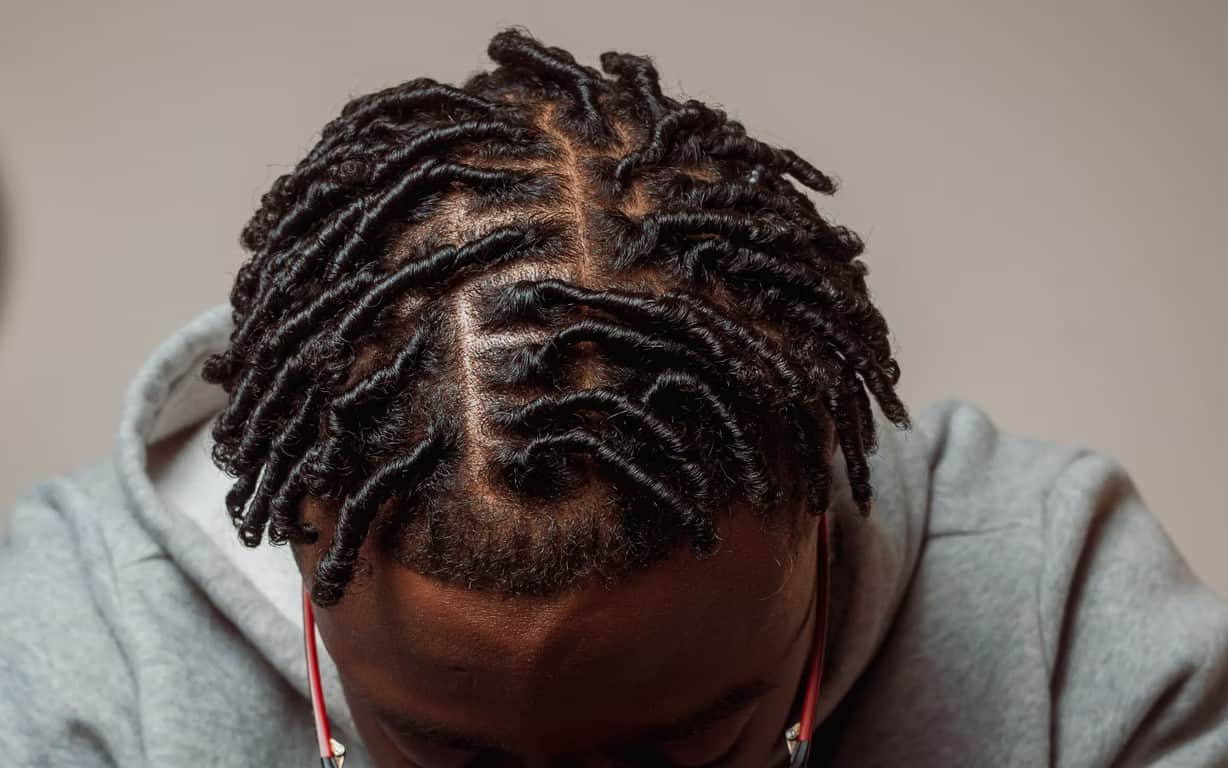How to Get Rid of Buildup In Dreadlocks

Mostly everyone who has hair will experience buildup at least once. If you’ve ever felt your dreadlocks become dull, dry, or start experiencing breakage, you might’ve had buildup in your scalp that prevented your hair from being healthy and reaching its full potential.
If you want to know more about the different types of buildup, how to get rid of dreadlock buildup, and how to prevent it, you’ve come to the right source. We will guide you through the tips and tricks to getting rid of the buildup on your scalp that could potentially be causing an odor, thinning, or breakage in your locs.
Learn more about the different types of products for all types of dreadlocks to help you in your hair care journey and prevent product buildup.
What Is Buildup?
Buildup is the process of substances accumulating on the scalp over time. Buildup typically results in residue and dry or brittle hair. Buildup is common but is also easy to treat and prevent.
What are the Types of Buildup?
You’ve probably experienced buildup on your scalp before, but maybe you didn’t know why. Here are the most common substances that cause buildup on your hair:
1. Product Buildup
Wearing a variety of dreadlock hairstyles involves maintaining and treating your hair using products like creams, gels, and oils. If you are applying too much of any product, this can cause it to build up over time. If you aren’t properly cleaning your hair, products from your daily or weekly routine will begin to pile on top of one another or “build up.”
2. Natural Buildup
Natural buildup is the type of substance that everyone produces biologically or naturally as a result of just being human. Here are three types of buildup that our scalp naturally produces:
Oil: Our scalps naturally produce oils, so if there is an overproduction of oil on your scalp or it isn’t being cleaned properly, this can cause buildup to occur.
Sweat: Throughout the day, your scalp produces sweat that can begin to build up over time. If you regularly exercise or naturally sweat a lot, this might be more common.
Dead skin cells: The skin cells on your body are always regrowing, so it’s normal for some dead ones to shed slowly and begin accumulating over time.
3. Environmental Buildup
This type of buildup includes any substance that might be floating around in the air or environment you’re in, such as dust particles.
4. Lint
One of the most common causes of buildup in locs is lint. This could be lint that sticks to your locs from fabrics of clothing, pillowcases, hats, scarves, etc. If you’re not mindful of this type of buildup, it’s easy for small pieces of lint to become intertwined in your locs over the months and years.
How Do I Know I Have Buildup?
It can be hard to know if you’re experiencing buildup sometimes, especially since some buildup is not visible to the eye. Here are some signs your locs have started to accumulate buildup:
- Your locs starts to experience breakage
- Thinning of locs
- Hair has stopped or slowly growing than normal
- You need to use more shampoo than usual to clean your hair
- Your locs are feeling dull, dry, or brittle
- A foul or unusual odor
How to Remove Buildup
So, how do you clean dreadlocks? The good news is you can get your locs back on track, feeling strong, and healthy. There are different methods on how to remove product buildup from locs. You just might need to change your routine, products, and or use one of the following remedies:
Clarifying shampoo
Most shampoos include softeners and conditioners that can be damaging to your locs. Clarifying shampoo contains strong cleansing ingredients to remove impurities from your hair, unlike traditional shampoos. If you are prone to sweat or have a lot of product buildup, use a clarifying shampoo every two to three weeks.
Apple cider vinegar
Apple cider vinegar, also known as ACV, is vinegar made from an apple fermenting process. This condiment is useful and trendy in cooking, beauty, and the natural hair care space. Incorporate an ACV rinse into your hair care routine to remove excess product, oil, sweat, and dirt.
Baking soda
You can never go wrong with an affordable at-home remedy. Baking soda includes properties that will remove residue and oil from your scalp that are causing the buildup. Mix four tablespoons of baking soda, ¾ cup water, and essential oils of your choice to make a paste and apply throughout your locs, before rinsing out.

How to Prevent Buildup
It’s important to know how to remove buildup when it occurs, but it’s equally important to establish a hair routine using the best hair products for natural hair to help prevent buildup in dreadlocks. Here are a few ways to help you prevent buildup:
Establish a proper cleansing routine
Once you’ve learned how to get dreadlocks, you’ll want to have a clear understanding of how to maintain them. Without a proper cleansing routine, your scalp and locs will begin to collect products, oils, sweat, and everything in between. We recommend washing dreadlocks every two to three weeks. Traditional shampoos contain ingredients that can be harmful to the growth and maintenance of your locs. Use a dreadlock-specific shampoo that will effectively remove all impurities from your scalp and keep your locs residue-free.
Avoid applying excess product
You can’t always visibly see every product that is sitting on your hair or scalp, but it is most likely there. Be conscious of the number and amount of products you apply in between your wash days. It’s easy to pile on a lot of oils and creams, but remember that a little goes a long way.
Find the right products
In addition to using too much product, using the wrong types of products on your hair can cause excess buildup. There are so many different types of hair products, but finding the ones that work for your hair type and loc style is key to avoiding buildup. To maintain your locs, we recommend the following products recommended by top beauty professionals today:
This alcohol-free gel product will help maintain your locks, without flaking or residue.
A lightweight oil to promote hair growth and seal your ends.
Pure rosewater spray to refresh and hydrate your scalp.
A multipurpose soap perfect for giving your locs a deep cleansing.
Strong hold gel with natural ingredients to give your locs the hold firm they need.
An essential oil blend to moisturize and soothe your scalp.
Residue and conditioner-free to help the locking process and cleanse your scalp.
Protect your locs
Last but not least is a good nighttime routine. It’s important to protect and preserve your healthy hair at night by wearing a satin bonnet, durag, or using a silk scarf or pillowcase. You should also cover your hair while in an environment where you may be surrounded by a lot of debris or dirt.
If you’ve been experiencing thinning, dull, or dry hair, then you might have buildup and even dandruff in your scalp. This could be due to an excess of product, overproduction of oil, or accumulated debris and dirt.
To remove buildup, you can try using a clarifying shampoo or try an apple cider vinegar rinse to bring your hair back to life. Establishing a great cleansing routine by properly cleaning your hair every two to three weeks, you will be able to fight against any type of buildup to give you healthy, hydrated locs.
With these tips, tricks, and techniques, hopefully, buildup won’t be seeing your locs anymore. However, in the case that your locs simply need a refresh to get back on track, find a stylist who can advise you on the best products to incorporate into your hair care routine. If you have been searching for the best dreadlocks Houston stylists offer or the best dreadlocks San Diego locticians recommend, we can help get you connected at StyleSeat.
Sources:
https://www.stylecraze.com/articles/best-products-for-dreadlocks/
https://www.refinery29.com/en-us/2015/04/86174/history-of-dreadlocks
https://www.ebony.com/style/history-dreadlocks/


